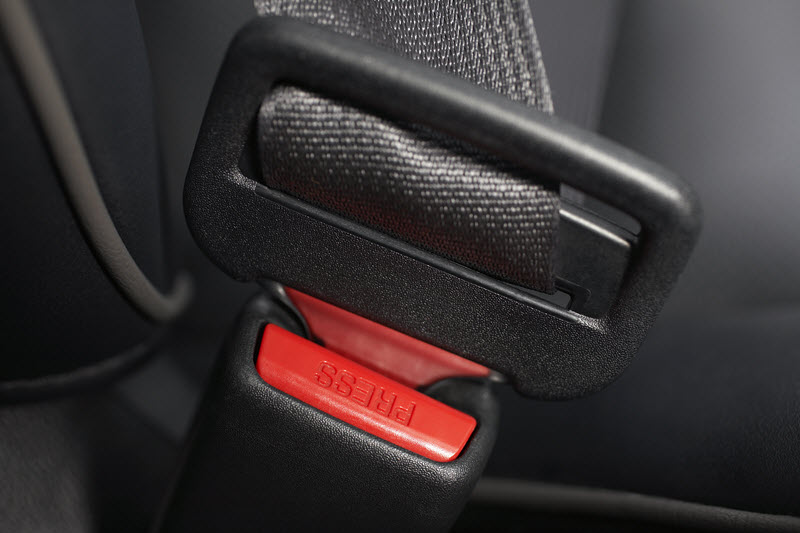There have been a huge number of advances in road safety, falling into two groups. The first is the vehicles themselves, and that’s down to big changes in requirements like seat belts, airbags and mandatory annual vehicle testing with MOTs. The second group of safety improvements is more to do with us, the drivers of the vehicles.
Let’s have a more detailed look at those two categories, and what the key advancements have been.
Vehicle Safety Improvements
When it comes to vehicles, it’s not really important whether you’re talking about a small runaround or a family car – most even include huge tracks used by businesses to transport stock around the country.
There have been a huge number of incremental changes in what is expected of vehicle manufacturers, and it’s made Britain’s roads safe than ever before, and some of the safest in the world too.
Seatbelts

When they were first introduced, drivers were deeply split about their arrival. They were fixed style belts, not the sort that pull out (they used to be known as inertia reel seatbelts). People found them uncomfortable and restrictive, and the only groups that universally recognised them were safety advocates and those that had seen first hand the injuries that could result from collisions.
Since 1983, it has been a legal requirement to wear seatbelts where available in the front of a car, and since 1986, anywhere in a car. At the time, it was estimated that ten thousand injuries a year were preventable each year on UK roads, around ten percent of which would have otherwise been fatal.
Air bags
While air-bags are now standard on almost all new cars for drivers, and almost as many on the passenger side, they are still not a legal requirement for new vehicles.
They are a relatively inexpensive thing to include for manufacturers, relative to other, more high tech safety features, so are popular because they show that safety is factored into the manufacturing process.
It’s certainly not comfortable to collide with an air-bag in the event of a collision, however it’s certainly preferable to the dashboard or the windscreen.
Annual Testing

Ensuring road-worthiness is the aim of the annual MOT testing once vehicle are three years old. Every vehicle, once past this age must undergo a fixed test which examines a wide range of aspects of vehicles, designed to keep dangerous cars, vans and lorries from the roads.
Contrary to popular belief, it doesn’t guarantee a given vehicle will be safe to continue on the road until the next test date, it is simply a snapshot of road-worthiness at the time of the test.
That said, most responsible testing centres will highlight any areas they believe that a vehicle owner should know about is they reasonably expect a problem to occur in the future.
Active Stop
A relatively new technology means your vehicle can brake when you don’t. If the safety system detects you’re approaching something too fast, it can slow the car on your behalf, even performing an emergency stop where needed. At the moment this is usually limited to kicking in at low speeds, but as technology advances is likely to become more widespread as a collision avoidance feature of new vehicles.
Driver Safety Requirements
Requiring the change in behaviour of drivers is rarely popular, as it inevitably leads to a proportion of people finding themselves no longer eligible to drive a vehicle on the road.
Age Based Licence Expiry

Once a driver reaches the age of seventy, their licence expires. From time to time, you’ll hear rumours that a new test is required to prove drivers are still capable. Fortunately that’s all they are, rumours!
The truth is simply that from seventy onwards, you simply need to reapply for your licence. There are a huge number of healthy, fit and competent drivers aged seventy or over, and actually evidence suggests that drivers in the seventeen to twenty one age group (sometimes referred to as inexperienced drivers) are far less safe on the roads.
Renewal is a simple process and can be completed online. At the time of writing, renewal itself is also free of charge.
It’s also true that drivers hitting seventy need to declare any medical conditions that affect their driving, which includes deterioration of eyesight and other conditions. What some people don’t tell you though, is that’s not specific to being seventy – it applies to all drivers, whether they’re 17, 40, 70 or 100!
For things like eyesight, so long as you can read a numberplate from twenty metres away with glasses, you’re likely to continue to be able to drive, so long as you’re wearing your glasses.
Alcohol And Drugs

You’ve probably heard about (or maybe even witnessed) people who have a few drinks and then get in their car and drive home. Very few people are still in denial about how dangerous that is, and now it’s reached a point where most of us will actively try to prevent people from doing so.
Where technology has helped is in breathalyser equipment available to police that can instantly tell if someone’s over the limit behind the wheel. There’s always stories doing the rounds about daft ways to cheat the system like sucking on a penny, but that’s not really the point – being a danger to yourself and other people is no laughing matter.
The same goes for drugs – no matter how much cannabis smoking idiots suggest that their habit does no harm, we’ve all seen those people that have serious memory issue or paranoia, even if they do claim it’s not connected in the slightest. Getting behind the wheel after a joint simply can’t be a good idea then.
Knowing Your Vehicle

This is an area that you may not think about until you change your car, as we often keep the same one for years – maybe even decades. You get in a new car though, indicate left and the wipers spring into action, try to pull away and realise you’re in reverse, and maybe even struggle to figure out how to get the seat into the right spot to drive. We’ve all been there!
There’s a lot more to knowing your vehicle than the act of driving it though, and some of them pertain to safety. For example, do you know exactly where to put the oil before you lift the bonnet? How about where to put the screen wash? Check the engine coolant level? Don’t be ashamed, you’re not alone if you can’t picture it all in your mind!
It’s a good idea to figure it out next time you have a few minutes, Murphy’s Law will dictate that you need to top up the screen wash when you’re in a rush, so being familiar under the bonnet is a good thing.
There’s also things you can do to make your life easier, like invest in an air compressor for your boot if the sensors go off. Reading a tyre inflator review website will give you the information you need quickly, and it’s a cost you’ll quickly recoup by not having to pay at the petrol station.
Be A Better Driver
There’s plenty of other things you can do to be a better driver too, like setting off in plenty of time to get to your destination without rushing. Avoiding driving when you’re tired is a good tip too, there have been some scary studies about the number of people who micro nap at the wheel.
Being safer at the wheel really is about life or death. Roads are inevitably going to be dangerous places when something goes wrong, but taking simple steps can mean you’re much less likely to be the one involved.